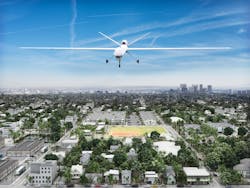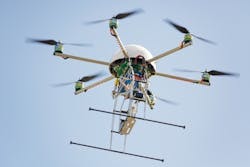Alaska unmanned aircraft system test site wins FAA COA, begins research flights
WASHINGTON, 5 May 2014. The University of Alaska’s unmanned aircraft system (UAS) test site is now operational, marking the second of six test sites to become operational, reveals officials at the U.S. Department of Transportation’s (DOT’s) Federal Aviation Administration (FAA) in Washington.
FAA officials have granted the University of Alaska Fairbanks a Certificate of Waiver or Authorization (COA) authorizing flights by an Aeryon Scout small UAS for animal surveys at its Pan-Pacific UAS Test Range Complex in Fairbanks.
The team began the wildlife flight operations today, and the COA is effective for two years.
“Alaska has a history of innovation in manned aviation, and now they are bringing that pioneering spirit into the unmanned aircraft arena as well,” says U. S. Transportation Secretary Anthony Foxx. “We look forward to the contributions they and the other test sites will make toward our efforts to ensure the safe and efficient integration of UAS into our nation’s skies.”
The main purpose of the Alaskan wildlife operation is to show how a UAS can accurately locate, identify, and count large wild animals, such as caribou, reindeer, musk ox, and bear for survey operations requested by the state of Alaska. Flights are taking place at the University of Alaska Fairbanks Large Animal Research Station (LARS).
“The test site program is forging ahead just as we expected,” explains FAA Administrator Michael Huerta. “The University of Alaska Fairbanks program is important because it includes a diverse set of test site range locations in seven climatic zones, so it will give us a wealth of data to help develop appropriate safety regulations and standards.”
The test site also will collect safety-related operational data needed for UAS integration. Since the research station is located within five miles of Fairbanks International Airport, the flights will evaluate procedures for coordination with air traffic controllers, as well as the type and frequency of operational data provided to them. This information will help the FAA analyze current processes for establishing small UAS airworthiness and system maturity.
Alaska UAS flights will verify the capabilities of the Aeryon Scout and its sensors, and will eventually lead to wildlife survey operations at multiple locations in Alaska, expected to occur in the summer and fall of 2014. The data about operating near airports will be used to prepare for other operations near airports both in Alaska and at the state’s partner test sites in Oregon and Hawaii.
The FAA selected six congressionally-mandated test sites on 30 December 2013. The FAA is working with the test sites to guide their research programs to help the FAA safely integrate UAS into the national airspace over the next several years.
UAS images courtesy Shutterstock.


